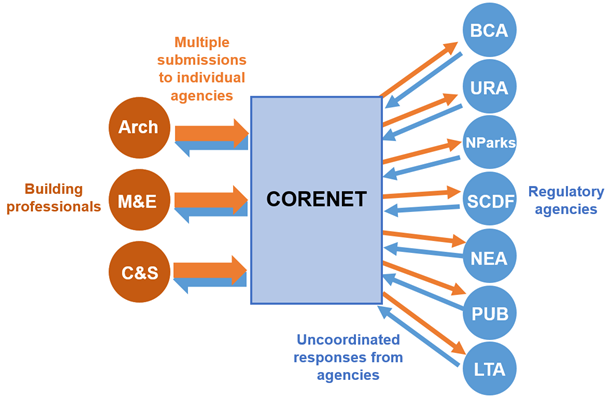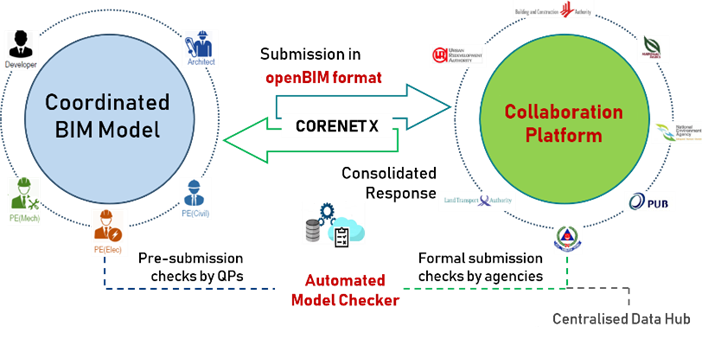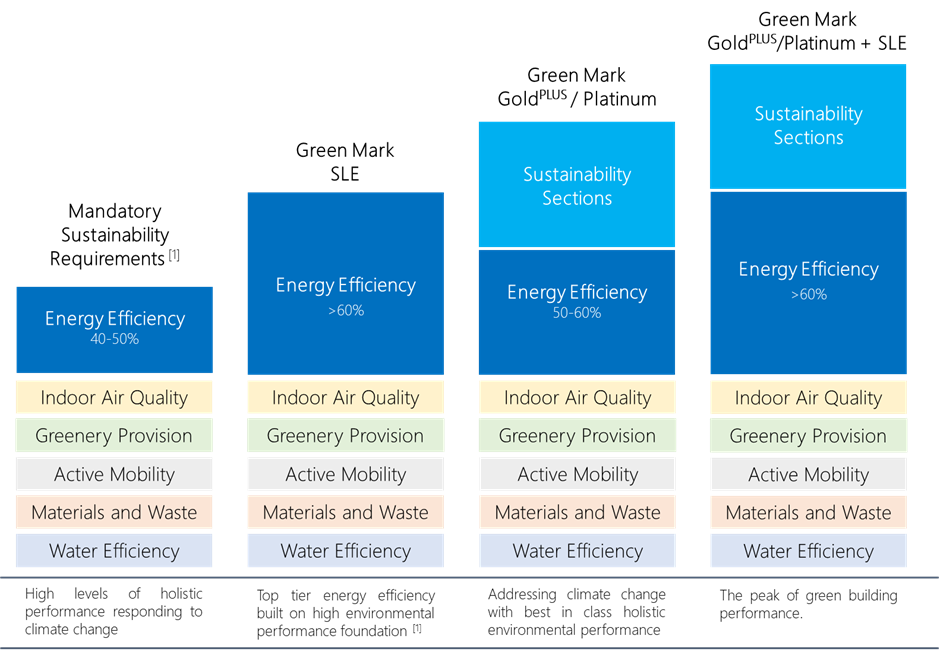While the Built Environment sector (BE) has suffered severely due to the COVID-19 pandemic, the crisis also offers an opportunity for concrete change and transformation, said Minister for National Development Desmond Lee.
In a wide-ranging speech at the International Built Environment Week (IBEW) 2021, Mr Lee announced updates to the Green Mark scheme and introduced CORENET X, giving the sector a fillip on the sustainable and digital fronts. “The past year has been an incredibly challenging one for the BE sector. Firms have been battered very hard,” said Mr Lee, adding that project delays due to the pandemic have hurt companies financially.
He was speaking to more than 3,700 participants from Singapore and overseas, most of whom tuned in online at the hybrid event that was held at the Marina Bay Sands Expo and Convention Center.
What many were paying attention to were the various initiatives Mr Lee highlighted that will lay the foundation for a more resilient BE sector.
So far, the government has introduced $1.36 billion in aid that includes levy waivers, rebates and wage subsidies, with more assistance expected to address specific issues from improving productivity and sustainability to manpower shortages.
Support Structures in Place
Solving manpower issues are a priority to alleviate delays, and legislation has been introduced to aid companies financially.
Mr Lee cited the Building and Construction Authority’s (BCA) recent announcement that an additional 1.3 per cent of monthly progress payment for eligible public sector construction contracts will be provided, to address foreign manpower salary costs increase.
“We recognise that many private sector developers and main contractors are already digging deep into their pockets to support the firms working on their projects, to keep them going,” he said.
He also noted that the Singapore Contractors Association Limited and Ministry of Manpower have set up a manpower exchange to match employers with workers whose work passes have expired.
Protecting workers is a key focus too. While 90 per cent of the industry’s workforce is fully vaccinated, Mr Lee urged employers to get their remaining workers vaccinated.
The government is also reviewing support measures for consultants who face uncertainty and delays in their projects, with BCA to announce more details in time.
Enhanced Green Mark and Introduction of CORENET X
Digitalisation has been crucial in battling the effects of COVID-19. It also helps the industry become more efficient and productive.
In a move to redefine the process of regulatory submissions to relevant government agencies, Mr Lee announced a one-stop integrated digital platform called CORENET X.
It is expected to enable an efficient, faster and easier-to-navigate regulatory process to benefit both industry practitioners and regulatory agencies when it is ready by end-2023.
With CORENET X, project teams can collaborate upfront to de-conflict their designs before making a coordinated BIM model to agencies, instead of individual consultants submitting plans to different agencies separately. This helps reduce discrepancies and abortive reworks downstream.
|
|
 Figure 1 – Current regulatory approval process Figure 1 – Current regulatory approval process
The current regulatory process allows concurrent submissions, where industry consultants submit plans to various agencies separately. This approach does not incentivise consultants to conduct proper design coordination, which is important for productive construction practices. The plans approval process and response time of the regulatory agencies are also largely dependent on the project teams’ own coordination as each individual agency assesses the submissions independently.
* Note: The diagram does not show all public agencies involved in the regulatory process
|
|
|
|
 Figure 2 – Concept of CORENET X Figure 2 – Concept of CORENET X
CORENET X requires the consultants to collaborate upfront to de-conflict their designs, and submit a coordinated BIM model to the authorities. Agencies will collectively review the submission and provide a consolidated response to the consultants. This integrated submission process provides a one shopfront experience and improves regulatory governance and synergy among agencies.
|
|
In his speech, Mr Lee also emphasised the need to enhance the sector’s environmental sustainability to tackle climate change, as buildings contribute over 20 per cent of carbon emissions in Singapore.
The BCA Green Mark 2021 (GM: 2021) rating scheme for green buildings will raise standards in energy performance and place greater emphasis on important sustainability outcomes such as reducing embodied carbon – the carbon footprint of construction materials, across a building’s life cycle.
GM: 2021 will also consider factors like the use of smart technology, designing for maintainability and creating a healthier environment for users.
We have received encouraging industry feedback that the refreshed Green Mark scheme will energise our green building leaders in the right direction and help them stay ahead of the curve. I encourage all of you to continue striving for Green Mark certification, and to capture new opportunities – both in Singapore and abroad – in the development of green buildings.
- Minister for National Development Desmond Lee
“Over the years, we have reviewed and refined the (Green Mark) scheme to ensure that we consistently raise the bar for our best-in-class standards, and to broaden the scope for sustainability in our built environment,” he said.
With GM: 2021, buildings will have to attain higher sustainability standards to be certified green, helping to reach the target of making 80 per cent of all buildings (by gross floor area) green by 2030.
|
|
 Figure 3 – Green Mark 2021 Ratings Figure 3 – Green Mark 2021 Ratings
|
|
A Collaborative Approach
As the BE sector involves many different players from major developers and construction companies to smaller-scale contractors, Mr Lee said a “value-chain approach” is required to transform the sector, rather than just providing support for individual companies.
For its part, the government as a major developer is pushing for both upstream and downstream transformation by establishing productivity and sustainability standards for public sector projects. The hope is for the private sector to follow suit.
This point of progressing together as one in the digitalisation journey was also brought up at the afternoon panel session on Super Low Energy Buildings, as panellists emphasised the importance of partners being in sync for projects to be successful.
Ultimately, it is about unity among industry players, said Mr Lee as he reimagined the future of the sector as “one that is a lot more sustainable, collaborative, innovative”.
“It's the collaborative mindset that allows developers, main contractors and the rest of the ecosystem to have that relationship to support each other beyond what is written in black and white,” he noted.